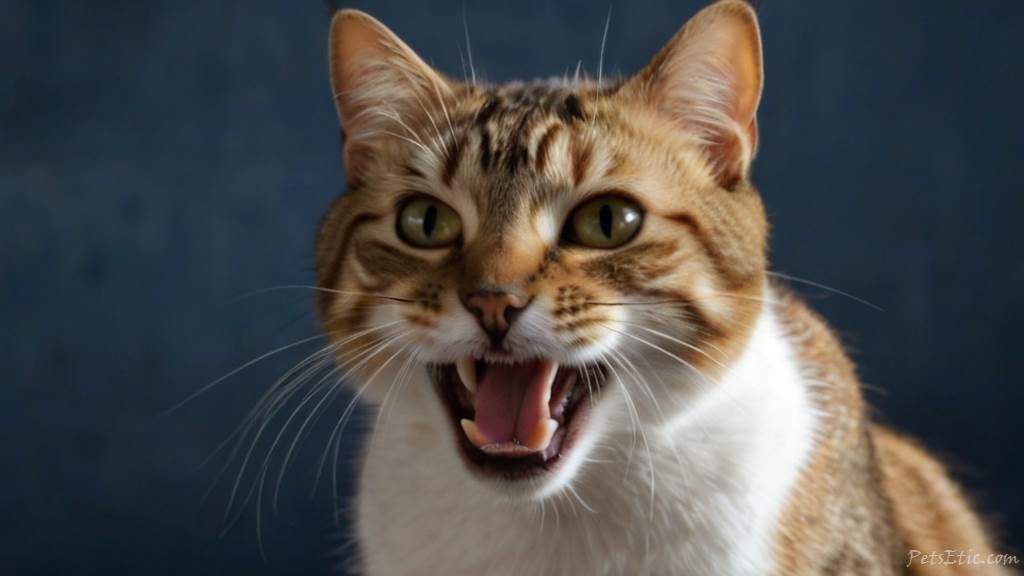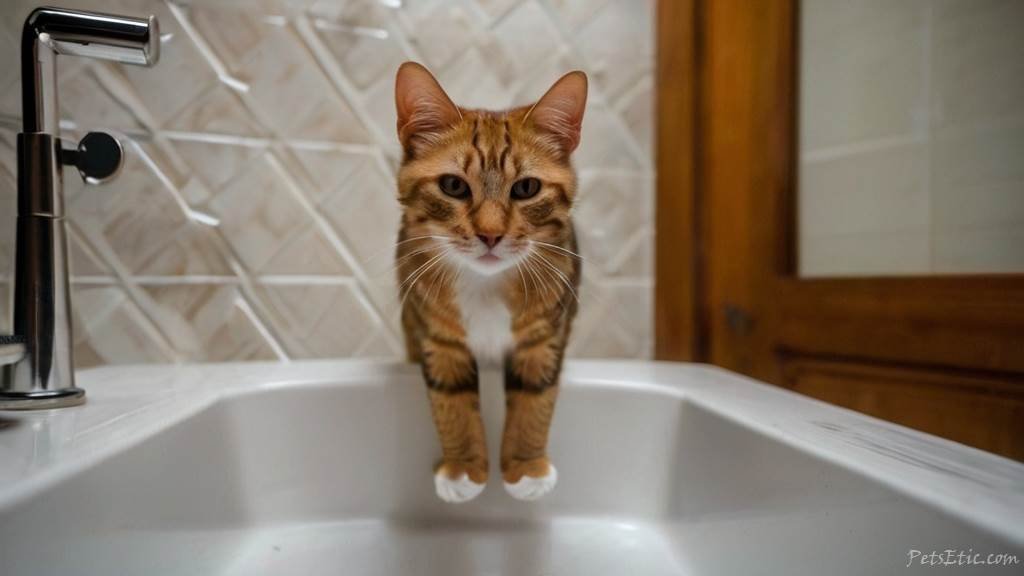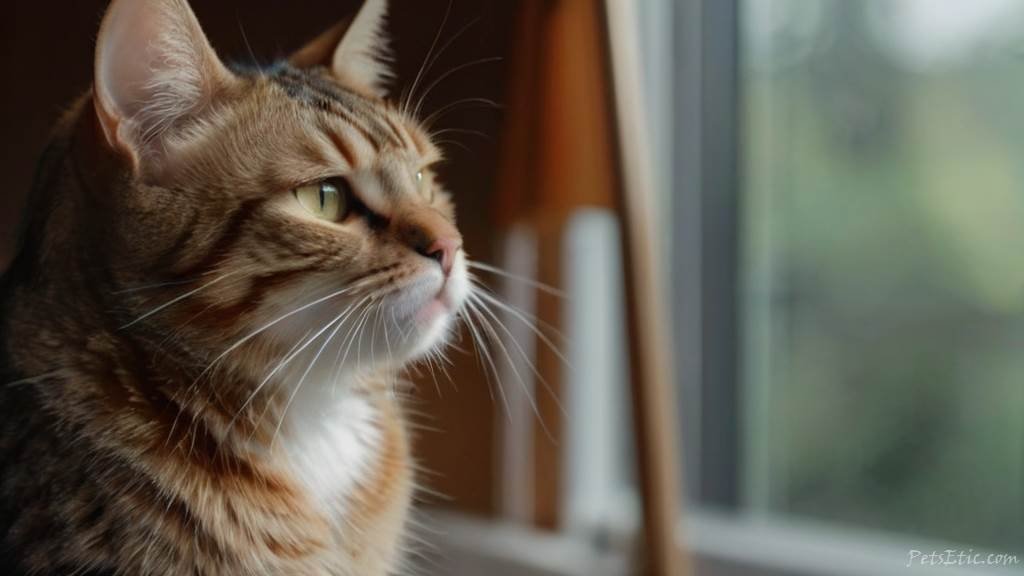Introduction to Feline Behavior
Understanding the Complexities of Cat Behavior
Cats, those enigmatic creatures that rule our homes with a paw of velvet, are fascinating subjects when it comes to behavior. But what lies beneath those purrs and whiskers? Understanding the complexities of cat behavior delves into a world where instincts, communication, and personality intertwine.
Contents
ToggleFrom their ancient lineage as solitary hunters to their current roles as beloved companions, cats have retained a plethora of behaviors that served them well in the wild. But how do these behaviors manifest in our modern living rooms, and what do they mean for our feline friends?
Importance of Investigating Feline Actions
Why should we bother investigating the actions of our feline friends? Well, imagine having a conversation with someone who speaks a different language than you. Without understanding their gestures and words, communication becomes challenging, if not impossible. Similarly, by delving into the nuances of cat behavior, we can bridge the gap between human and feline worlds, leading to better understanding, communication, and care.
As cat lovers, it’s not just about satisfying our curiosity—it’s about creating a harmonious environment where our pets can thrive. By unraveling the mysteries of why cats do what they do, we unlock the keys to their happiness and well-being.
Now, let’s embark on a journey into the intriguing world of feline behavior, starting with a question that might have puzzled many cat owners: Why do cats rub their teeth on things?
Why Cats Rub Their Teeth on Surfaces?
Have you ever caught your cat rubbing their teeth on various surfaces around your home? It’s not uncommon to witness this peculiar behavior, and it often leaves us scratching our heads in confusion. However, there’s a method to this madness.
Scent Marking and Territory
Cats are notorious for marking their territory, and tooth rubbing is just another tool in their arsenal. When cats rub their teeth on objects, they’re not only leaving behind their scent but also claiming ownership of that particular spot. It’s their way of saying, “This is mine!”
Dental Health and Maintenance
Believe it or not, tooth rubbing can also serve a practical purpose for cats. Just like how we humans brush our teeth to keep them clean and healthy, cats may engage in tooth rubbing to remove food particles or plaque buildup. It’s their version of dental hygiene, albeit a bit unconventional.
Social Signaling and Communication
Additionally, tooth rubbing can be a form of social signaling among cats. By leaving their scent on various objects, cats are communicating with other felines in the area. It’s a way of saying, “I was here,” or “I’m feeling comfortable and secure in my surroundings.”
In essence, when your cat engages in tooth rubbing behavior, they’re not only asserting their dominance but also taking care of their dental hygiene and communicating with their furry companions. It’s a multi-faceted behavior that showcases the intricate nature of feline behavior.

The Instinctual Nature of Cats
Evolutionary Background of Felids
Cats, with their sleek bodies and keen senses, have a rich evolutionary history that dates back thousands of years. From the mighty lions prowling the savannas to the elusive wildcats stalking the forests, felids have adapted to diverse environments and developed a unique set of skills to survive and thrive in the wild.
1. Adaptable Hunters: Felids are natural-born hunters, finely tuned to stalk and pounce on their prey with precision. Their ancestors, like the prehistoric saber-toothed cats, roamed the earth as apex predators, relying on their sharp claws, powerful jaws, and stealthy tactics to capture their next meal.
2. Solitary Predators: Unlike their canine counterparts, cats are solitary creatures by nature, preferring to hunt and roam alone rather than in packs. This solitary lifestyle has shaped their behavior and instincts, making them highly independent and self-sufficient animals.
3. Territorial Instincts: One of the most distinctive traits of felids is their strong sense of territoriality. Cats are fiercely protective of their territory, marking boundaries with scent signals and engaging in territorial disputes with intruders. This territorial behavior ensures access to resources like food, water, and mates, crucial for their survival in the wild.
The Role of Instincts in Feline Behavior
The instincts ingrained in cats through generations of evolution play a pivotal role in shaping their behavior and interactions with the world around them. These instincts serve as a blueprint for survival, guiding cats through various activities and social interactions.
1. Hunting Instincts: The hunting instinct is perhaps the most prominent in cats, driving them to stalk, chase, and capture prey. Even domestic cats, though well-fed by their human companions, retain this innate desire to hunt, exhibiting behaviors like pouncing on toys or stalking birds through windows.
2. Grooming Behavior: Cats are notorious for their meticulous grooming habits, which stem from their instinctual need to keep themselves clean and free of parasites. This grooming behavior not only maintains their hygiene but also serves as a form of self-care and relaxation.
3. Scent Marking: Scent marking is another instinctual behavior deeply rooted in felids. By rubbing their cheeks or spraying urine, cats deposit pheromones to communicate with other cats and establish their territory. This instinctual form of communication helps maintain social hierarchies and avoid conflicts among feline neighbors.
In essence, the instincts inherited from their wild ancestors continue to influence every aspect of a cat’s life, from their hunting strategies to their social interactions. Understanding these instincts is key to unraveling the mysteries of feline behavior and nurturing a deeper connection with our beloved pets.
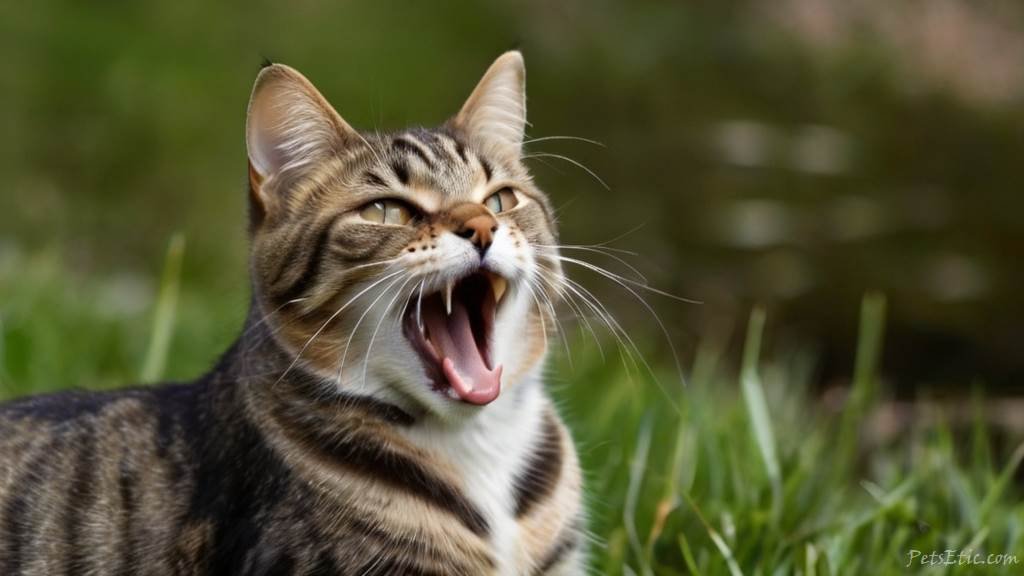
Communication Through Scent
The Significance of Scent Marking in Cats
Cats have a unique way of communicating with each other and the world around them: scent marking. While humans might rely on verbal language or body gestures to convey messages, cats use their sense of smell to leave behind invisible signals that convey a wealth of information to other felines.
1. Establishing Territory: Scent marking plays a crucial role in defining a cat’s territory. By rubbing their cheeks against objects or spraying urine, cats deposit pheromones that mark their territory boundaries. This helps to establish ownership of a particular area and warn off potential intruders.
2. Social Interaction: Scent marking isn’t just about claiming territory—it’s also a form of social interaction among cats. When cats rub against each other, they’re not just exchanging pleasantries, they’re exchanging scent markers that communicate familiarity and acceptance. It’s their way of saying, “You’re part of my social circle.”
3. Stress Reduction: Surprisingly, scent marking can also serve as a stress-relief mechanism for cats. When faced with unfamiliar or stressful situations, cats may engage in scent marking to create a sense of familiarity and security in their environment. It’s like leaving behind a comforting scent trail to navigate through uncertain times.
How Cats Use Chemical Communication
Cats are masters of chemical communication, using a variety of scent glands located throughout their bodies to leave behind subtle messages for other cats to interpret.
1. Facial Glands: The most common form of scent marking in cats involves the facial glands located on their cheeks and around their mouths. When cats rub their cheeks against objects or people, they’re depositing pheromones that convey information about their identity, social status, and territory.
2. Urinary Marking: While less pleasant for us humans, urinary marking is another important form of chemical communication for cats. By spraying small amounts of urine on vertical surfaces, cats leave behind a potent scent marker that can be detected by other cats from a considerable distance away. It’s their way of broadcasting their presence and asserting dominance in their territory.
3. Scratching Behavior: Ever wondered why cats love to scratch? It’s not just about sharpening their claws—it’s also a form of scent marking. When cats scratch surfaces, they’re not only leaving behind visible marks but also depositing scent markers from glands located in their paw pads. It’s a multi-sensory way of saying, “This is mine!”
In essence, scent marking is a vital aspect of feline communication, allowing cats to navigate their social interactions, establish territorial boundaries, and navigate the complex world around them. Understanding the significance of scent marking sheds light on the intricate ways in which cats communicate with each other and enriches our understanding of their behavior.
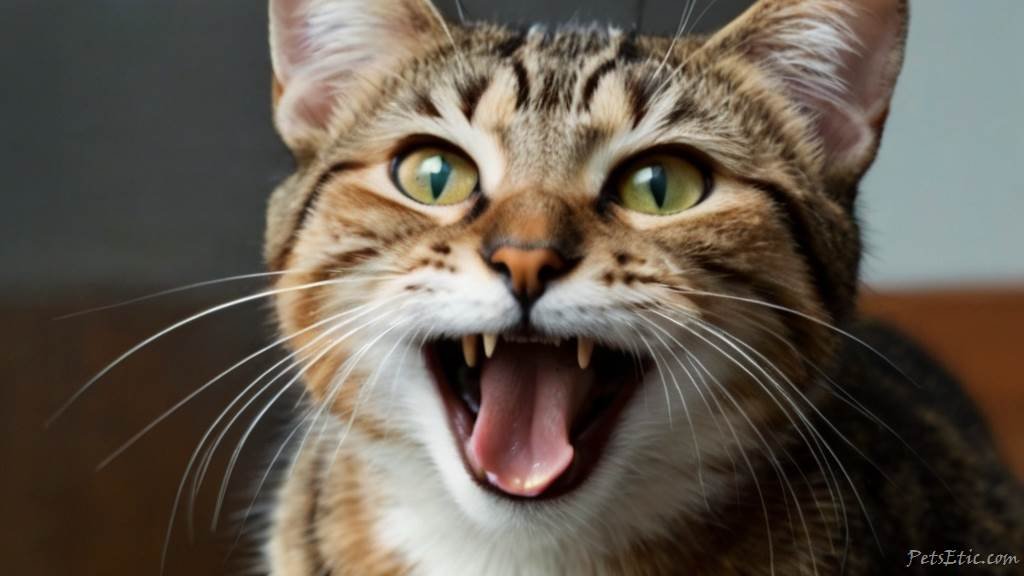
Dental Health and Social Signaling
Linking Oral Behavior to Social Interactions
Have you ever noticed how cats seem to have their own unique way of communicating with each other and with us humans? Well, their oral behavior plays a significant role in these interactions. Let’s dive deeper into how cats use their mouths not only for eating but also for social signaling.
1. Grooming Rituals: Cats are meticulous groomers, often spending hours licking and grooming themselves. But did you know that grooming isn’t just about staying clean? It’s also a form of social bonding and communication among cats. When cats groom each other, they’re not only removing dirt and parasites but also reinforcing social bonds and hierarchy within their group.
2. Scent Transfer: Another fascinating aspect of oral behavior in cats is their use of scent transfer. When cats rub their heads or faces against objects, people, or other animals, they’re depositing pheromones that convey information about their identity, territory, and social status. It’s their way of leaving behind a scent signature that says, “I was here.”
3. Vocalizations: While not directly related to oral behavior, vocalizations also play a crucial role in feline communication. From meows and purrs to hisses and growls, cats use a wide range of vocalizations to express their emotions and needs. Paying attention to the tone and pitch of your cat’s meows can give you valuable insights into their mood and desires.
Exploring the Relationship Between Dental Health and Communication
Now, let’s shift our focus to the often-overlooked connection between dental health and communication in cats. While it might seem unrelated at first glance, the condition of a cat’s teeth and gums can have a significant impact on their ability to engage in social interactions.
1. Pain and Discomfort: Just like humans, cats can experience dental issues such as tooth decay, gum disease, and oral infections. These dental problems can cause pain, discomfort, and even difficulty eating and grooming. As a result, cats may become withdrawn, irritable, or less inclined to engage in social interactions.
2. Altered Behavior: Dental pain can also manifest in changes in behavior. A cat who is experiencing oral discomfort may become more aggressive or withdrawn, preferring to avoid social interactions altogether. They may also exhibit changes in eating habits, such as refusing to eat hard food or drooling excessively.
3. Communication Challenges: Additionally, dental issues can impact a cat’s ability to vocalize effectively. Painful teeth or gums may make it difficult for cats to meow, purr, or make other vocalizations, leading to a breakdown in communication with their human companions.
In summary, maintaining good dental health is not only essential for your cat’s physical well-being but also for their ability to engage in social interactions and communicate effectively. By keeping an eye on your cat’s oral health and addressing any dental issues promptly, you can help ensure that they lead happy, healthy, and socially fulfilling lives.

Investigating Tooth Rubbing Behavior
Observations and Patterns of Tooth Rubbing
Have you ever caught your furry friend rubbing their teeth against various surfaces around your home? It’s a behavior that might seem puzzling at first, but upon closer observation, you’ll start to notice some intriguing patterns.
1. Targeted Surfaces: One common observation is that cats often target specific surfaces for tooth rubbing. Whether it’s the corner of a piece of furniture, the edge of a door frame, or even your fingers, cats seem to have their preferred spots for this peculiar behavior.
2. Repetitive Movements: Another pattern you might notice is the repetitive nature of tooth rubbing. Cats often engage in this behavior multiple times in a row, sometimes with short breaks in between. It’s almost as if they’re trying to achieve a certain sensation or satisfaction through the rubbing motion.
3. Contextual Triggers: Paying attention to the context in which tooth rubbing occurs can also provide valuable insights. Is your cat rubbing their teeth after a meal? Before settling down for a nap? When interacting with other pets or humans? By identifying these contextual triggers, you can start to piece together the puzzle of what motivates your cat to engage in this behavior.
Identifying Environmental Triggers
Now that we’ve observed some of the patterns associated with tooth rubbing behavior, let’s delve into the environmental factors that might trigger this curious habit.
1. Scent Marking: As we’ve discussed earlier, scent marking is a common behavior among cats, and tooth rubbing can be a part of this repertoire. Your cat might be rubbing their teeth against surfaces to deposit scent markers and communicate with other cats in the household or neighborhood.
2. Environmental Enrichment: In some cases, tooth rubbing may be a form of environmental enrichment for cats. Just like how we humans engage in activities like chewing gum or tapping our feet when we’re bored or restless, cats may turn to tooth rubbing as a way to alleviate boredom or excess energy.
3. Stress Relief: Additionally, tooth rubbing can serve as a form of stress relief for cats. If your furry friend is feeling anxious or overwhelmed, they may turn to repetitive behaviors like tooth rubbing as a way to self-soothe and calm their nerves.
By carefully observing your cat’s behavior and environment, you can start to unravel the mystery of tooth rubbing and gain a better understanding of what drives this intriguing habit. Remember to provide plenty of opportunities for mental and physical stimulation, as well as a safe and secure environment where your cat feels comfortable expressing their natural behaviors.
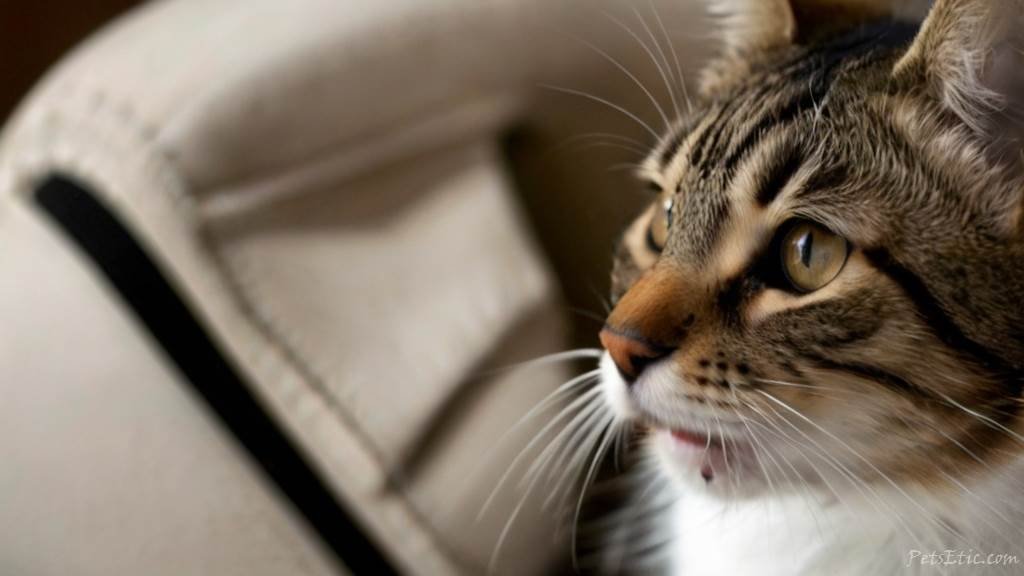
Understanding Specific Tooth Rubbing Behaviors
Why Cats Rub Their Teeth on Surfaces
Have you ever caught your cat rubbing their teeth against various surfaces in your home? It’s a behavior that might seem strange at first, but there’s often a method to their madness.
1. Scent Marking: One reason why cats rub their teeth on surfaces is to mark their territory. Just like how they rub their cheeks against furniture or walls to leave behind their scent, tooth rubbing serves a similar purpose. By depositing scent markers from their teeth, cats are essentially saying, “This is mine!”
2. Dental Care: Believe it or not, tooth rubbing can also serve a practical purpose for cats. It’s their way of keeping their teeth clean and healthy. By rubbing their teeth against rough surfaces, cats can remove plaque buildup and food particles, promoting better dental hygiene.
3. Social Signaling: Tooth rubbing can also be a form of social signaling among cats. When they rub their teeth on objects or other animals, they’re not only leaving behind their scent but also communicating with their furry companions. It’s a way of saying, “I’m here,” or “I’m feeling comfortable in my surroundings.”
Why Does My Cat Rub Her Gums on Me?
Have you ever experienced the sensation of your cat rubbing her gums against you? It might seem strange, but there’s a reason behind this behavior.
1. Affectionate Gesture: In many cases, cats rub their gums on their owners as a sign of affection. It’s their way of showing love and closeness, similar to how they might rub their cheeks or head against you.
2. Scent Exchange: When your cat rubs her gums on you, she’s also engaging in a form of scent exchange. By transferring her scent onto you, she’s marking you as part of her territory and reinforcing the bond between you.
3. Comfort Seeking: Sometimes, cats rub their gums on their owners when they’re seeking comfort or reassurance. It’s a soothing behavior that helps them feel safe and secure in your presence.
Why Do Cats Rub Against You Then Bite?
It’s a scenario that many cat owners are familiar with: your cat approaches you, rubs against your leg, and then suddenly gives you a playful bite. But why do they do this?
1. Mixed Signals: In most cases, when cats rub against you and then bite, it’s not meant to be aggressive. Instead, it’s often a playful gesture that can be misinterpreted. Your cat might be seeking attention or initiating playtime, but their biting behavior can catch you off guard.
2. Overstimulation: Sometimes, cats can become overstimulated during petting or affectionate interactions. Rubbing against you might feel good at first, but if they start to feel overwhelmed, they may resort to biting as a way to release pent-up energy or frustration.
3. Communication Breakdown: It’s also possible that your cat is trying to communicate something to you through their biting behavior. Whether it’s a signal that they’ve had enough attention or a playful invitation for more interaction, paying attention to your cat’s body language can help decipher their intentions.
Why Does My Cat Rub His Teeth on My Finger?
If your cat has ever rubbed his teeth against your finger, you might be wondering what’s behind this behavior.
1. Scent Recognition: Cats rely heavily on their sense of smell to navigate the world around them. By rubbing his teeth on your finger, your cat might be trying to familiarize himself with your scent, reinforcing the bond between you.
2. Affectionate Gesture: Similar to rubbing his gums on you, rubbing his teeth on your finger can also be a sign of affection. It’s a way for your cat to show that he trusts and feels comfortable with you.
3. Playfulness: In some cases, tooth rubbing might simply be your cat’s way of engaging in play. Cats are curious creatures, and they often use their mouths to explore and interact with objects in their environment.
Why Does My Cat Like His Teeth Rubbed?
Have you ever noticed your cat leaning into your hand when you rub his teeth? It might seem odd, but many cats actually enjoy this sensation.
1. Pleasant Sensation: Just like how we humans enjoy a good back scratch or massage, cats can find the sensation of having their teeth rubbed enjoyable. It’s a form of tactile stimulation that can feel soothing and relaxing for them.
2. Dental Care: In addition to being pleasurable, rubbing your cat’s teeth can also help promote good dental hygiene. By gently massaging his gums and teeth, you’re helping to remove plaque and tartar buildup, keeping his mouth healthy and fresh.
3. Bonding Experience: Finally, the act of rubbing your cat’s teeth can also strengthen the bond between you. It’s a form of physical affection that allows you to connect with your cat on a deeper level, fostering trust and companionship.
Why Does My Cat Love Nibbling My Fingers?
If your cat has a penchant for nibbling on your fingers, you’re not alone. Many cats exhibit this behavior, and there are several reasons why they might enjoy it.
1. Playfulness: Cats are natural-born hunters, and they often use their mouths to interact with objects in their environment. When your cat nibbles on your fingers, he might be engaging in a playful game, simulating the behavior of hunting and catching prey.
2. Affectionate Gesture: Nibbling on your fingers can also be a sign of affection from your cat. It’s his way of showing that he trusts and feels comfortable with you, and he enjoys the physical contact and attention that comes from nibbling on your fingers.
3. Exploration: Finally, nibbling on your fingers might simply be your cat’s way of exploring and interacting with the world around him. Cats are curious creatures, and they often use their mouths to investigate new objects and textures.
In conclusion, understanding the specific behaviors associated with tooth rubbing can provide valuable insights into your cat’s preferences, motivations, and communication methods. By paying attention to your cat’s body language and responding to their cues with patience and understanding, you can strengthen the bond between you and your furry friend.
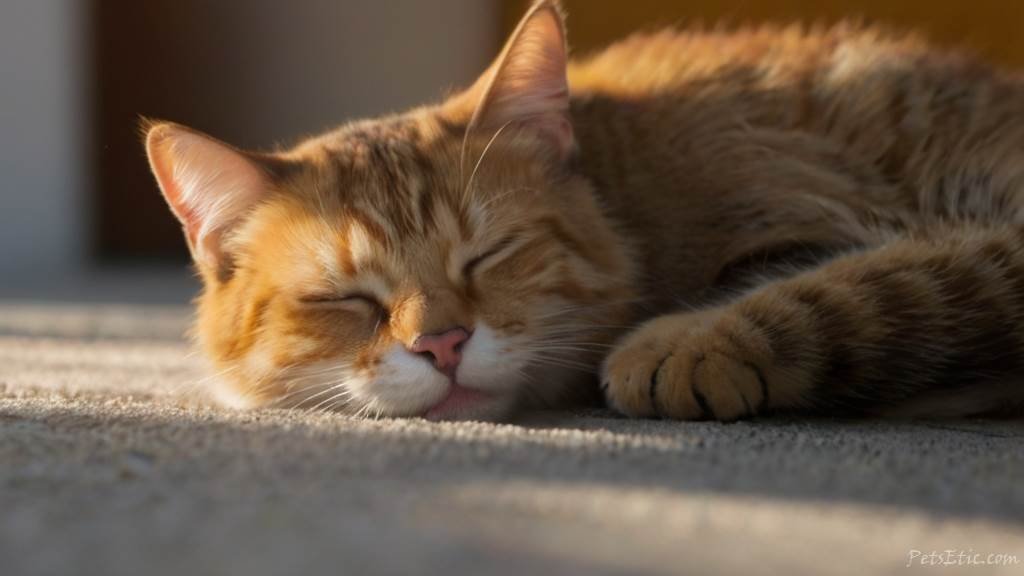
The Role of Pheromones in Tooth Rubbing
Understanding Pheromone Communication in Cats
Have you ever wondered how cats seem to communicate effortlessly with each other, even without uttering a single meow? Well, the secret lies in pheromones – powerful chemical signals that play a vital role in feline communication.
1. Invisible Messages: Pheromones are scent signals produced by glands located throughout a cat’s body, including their cheeks, paws, and anal area. These invisible messages convey a wealth of information to other cats, from territory boundaries to social status and even mating readiness.
2. Social Bonding: Pheromones also play a crucial role in social bonding among cats. When cats rub against each other or objects in their environment, they’re depositing pheromones that create a sense of familiarity and belonging within their social group. It’s their way of saying, “We’re part of the same clan.”
3. Emotional Regulation: Interestingly, pheromones can also influence a cat’s emotional state and behavior. Certain pheromones, like those produced by nursing mothers, can have a calming effect on cats, helping to reduce stress and anxiety in unfamiliar or stressful situations.
How Pheromones Influence Tooth Rubbing Behavior
Now that we understand the basics of pheromone communication in cats, let’s explore how these powerful chemical signals influence tooth rubbing behavior.
1. Scent Marking: Tooth rubbing is a common form of scent marking among cats, and pheromones play a central role in this behavior. When cats rub their teeth against objects or other animals, they’re not only leaving behind their scent but also depositing pheromones that convey information about their identity, territory, and social status.
2. Social Signaling: Tooth rubbing can also be a form of social signaling among cats. By depositing pheromones through tooth rubbing, cats are communicating with other felines in their environment, establishing social hierarchies, and maintaining group cohesion. It’s their way of saying, “I’m here, and this is my space.”
3. Stress Relief: Additionally, tooth rubbing can serve as a form of stress relief for cats, thanks to the calming effects of certain pheromones. When cats engage in tooth rubbing behavior, they may be seeking to create a sense of familiarity and security in their environment, helping to alleviate feelings of anxiety or uncertainty.
In summary, pheromones play a multifaceted role in tooth rubbing behavior, serving as both a means of communication and a source of emotional regulation for cats. By understanding the influence of pheromones on tooth rubbing, we can gain valuable insights into the complex world of feline behavior and deepen our bond with our furry companions.

Behavioral and Psychological Factors
Stress, Anxiety, and Tooth Rubbing
Have you ever noticed your cat engaging in tooth rubbing behavior during times of stress or anxiety? While it might seem like a harmless habit, tooth rubbing can actually be a subtle indicator of underlying emotional issues.
1. Manifestation of Stress: Cats are highly sensitive creatures, and they’re prone to experiencing stress and anxiety in response to various environmental factors. Whether it’s a change in routine, the presence of unfamiliar animals, or loud noises, these stressors can trigger tooth rubbing behavior as a coping mechanism.
2. Self-Soothing Behavior: Similar to how humans might bite their nails or fidget when feeling anxious, cats may turn to tooth rubbing as a way to self-soothe and alleviate feelings of stress. By engaging in repetitive behaviors like tooth rubbing, cats can create a sense of familiarity and comfort in their environment, helping to reduce their anxiety levels.
3. Environmental Stressors: It’s important to consider the specific environmental stressors that may be contributing to your cat’s tooth rubbing behavior. Is there construction work happening nearby? Have there been any recent changes in your cat’s living situation? By identifying and addressing these stressors, you can help alleviate your cat’s anxiety and reduce their reliance on tooth rubbing as a coping mechanism.
The Connection Between Emotional States and Oral Behavior
Understanding the relationship between emotional states and oral behavior is key to deciphering the underlying motivations behind tooth rubbing in cats.
1. Emotional Expression: Cats are masters of non-verbal communication, and their oral behavior can serve as a powerful indicator of their emotional state. For example, a cat who is feeling relaxed and content may engage in gentle tooth rubbing as a form of affectionate interaction. On the other hand, a cat who is feeling anxious or stressed may exhibit more intense tooth rubbing behavior as a way to release pent-up tension.
2. Coping Mechanisms: Just like humans, cats have their own unique coping mechanisms for dealing with stress and anxiety. While some cats may retreat to a quiet corner or seek out comforting spaces, others may turn to repetitive behaviors like tooth rubbing as a way to distract themselves and regulate their emotions.
3. Health Considerations: It’s also important to consider the potential impact of oral health issues on your cat’s behavior. Dental problems such as tooth decay, gum disease, or oral infections can cause pain and discomfort, leading to changes in behavior including tooth rubbing. If you suspect that your cat’s tooth rubbing behavior is linked to dental issues, it’s essential to consult with your veterinarian for a thorough examination and appropriate treatment.
In conclusion, tooth rubbing behavior in cats is often influenced by a combination of behavioral and psychological factors, including stress, anxiety, and emotional expression. By paying attention to your cat’s body language and addressing any underlying stressors or health concerns, you can help support their emotional well-being and promote healthier oral habits.
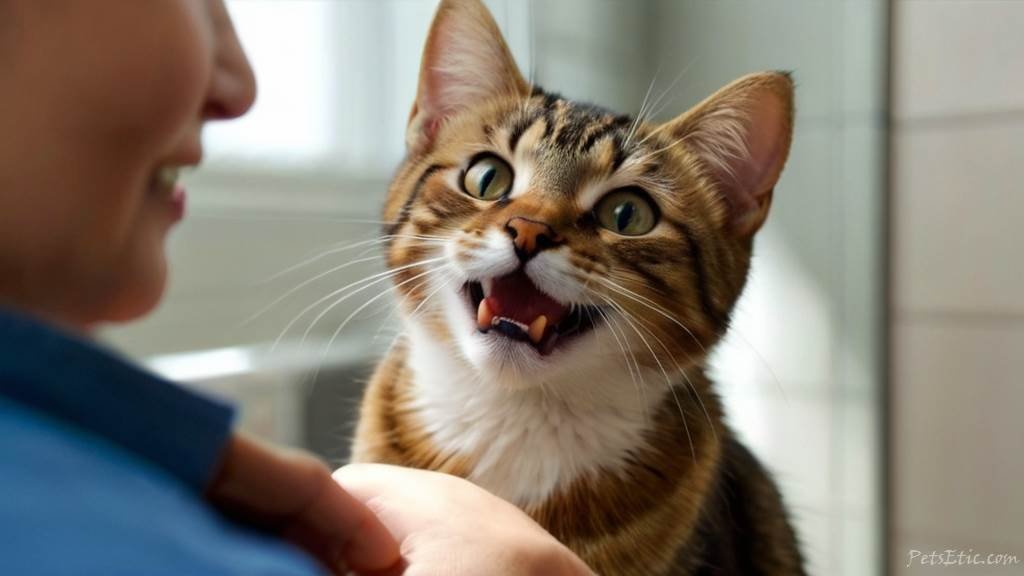
Addressing Potential Health Concerns
Dental Issues and Tooth Rubbing Behavior
Have you ever considered that your cat’s tooth rubbing behavior could be indicative of underlying dental issues? It’s a possibility worth exploring, as dental problems are not uncommon in our feline friends and can manifest in various ways.
1. Pain and Discomfort: Just like humans, cats can experience dental problems such as tooth decay, gum disease, and oral infections. These issues can cause pain, discomfort, and inflammation in the mouth, leading your cat to engage in behaviors like tooth rubbing as a way to alleviate the discomfort.
2. Compensatory Behaviors: In some cases, tooth rubbing may be a compensatory behavior for dental pain. Cats may instinctively seek out rough surfaces to rub their teeth against in an attempt to dislodge food particles, alleviate gum irritation, or relieve pressure on a sore tooth.
3. Indicators of Dental Disease: Paying attention to your cat’s tooth rubbing behavior can provide valuable clues about their oral health. If you notice that your cat is rubbing their teeth more frequently or vigorously than usual, it could be a sign that they’re experiencing dental discomfort and may benefit from a thorough dental examination by a veterinarian.
Recognizing Signs of Dental Problems in Cats
As responsible pet owners, it’s essential to be vigilant about recognizing the signs of dental problems in our cats and taking proactive steps to address them.
1. Bad Breath: One of the most common signs of dental issues in cats is persistent bad breath, also known as halitosis. If your cat’s breath smells foul or unpleasant, it could indicate the presence of dental disease or oral infections.
2. Changes in Eating Habits: Dental pain or discomfort can also impact a cat’s eating habits. You may notice that your cat is reluctant to eat hard food, takes longer to finish meals, or shows signs of discomfort while chewing. These changes in eating behavior could be red flags for underlying dental problems.
3. Pawing at the Mouth: Cats who are experiencing dental pain may paw at their mouths or exhibit signs of oral discomfort, such as drooling or pawing at the face. If you observe these behaviors in your cat, it’s essential to seek veterinary attention promptly to rule out any serious dental issues.
In conclusion, tooth rubbing behavior in cats can sometimes be a symptom of underlying dental problems that require attention and treatment. By staying vigilant for signs of dental disease and seeking prompt veterinary care when needed, you can help ensure that your cat maintains optimal oral health and overall well-being.
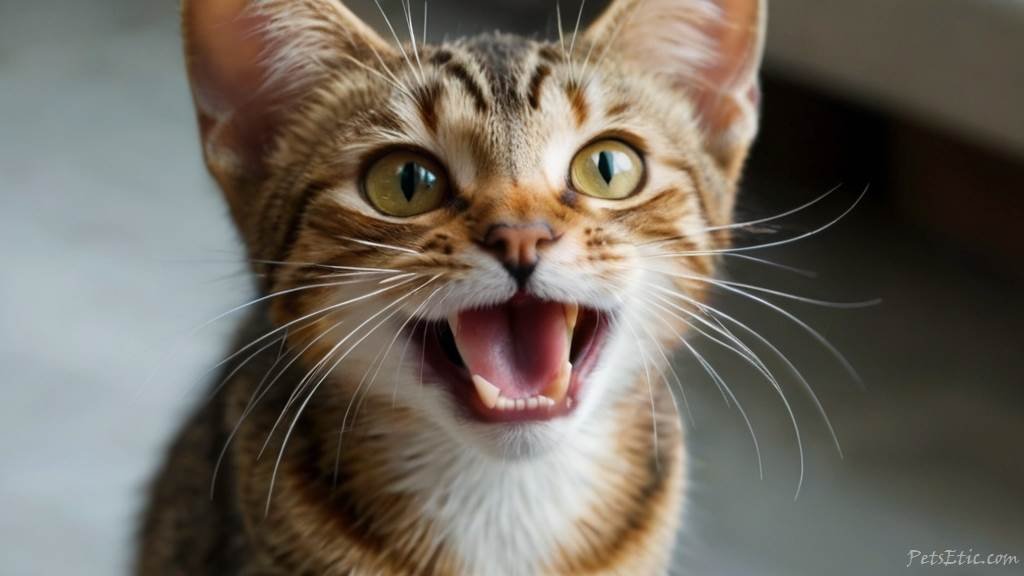
Practical Approaches for Cat Owners
Creating Enriching Environments to Reduce Tooth Rubbing
Creating an enriching environment for your feline friend is essential for their physical and mental well-being. By providing stimulating activities and outlets for natural behaviors, you can help reduce your cat’s reliance on tooth rubbing as a coping mechanism.
1. Environmental Enrichment: Invest in a variety of interactive toys, scratching posts, and climbing structures to keep your cat mentally and physically engaged. Rotating toys and introducing new objects into their environment can prevent boredom and provide opportunities for exploration and play.
2. Scent Stimulation: Cats rely heavily on their sense of smell to navigate their surroundings. Consider incorporating scent enrichment activities into your cat’s daily routine, such as hiding treats or toys in different locations around the house or using cat-safe herbs like catnip or silver vine to create sensory experiences.
3. Vertical Space: Cats are natural climbers and enjoy perching in high places to survey their territory. Provide vertical space in your home, such as shelves, cat trees, or window perches, where your cat can safely observe their surroundings and indulge their natural instincts.
Tips for Managing Dental Health and Behavior
Maintaining your cat’s dental health is crucial for their overall well-being and can help prevent dental issues that may contribute to tooth rubbing behavior. Here are some practical tips for managing your cat’s dental health and behavior:
1. Regular Brushing: Get into the habit of brushing your cat’s teeth regularly using a feline-specific toothbrush and toothpaste. Start slowly and gradually introduce tooth brushing into your cat’s routine, rewarding them with treats and praise to make the experience positive and enjoyable.
2. Dental Treats and Toys: Provide your cat with dental treats and toys designed to promote healthy teeth and gums. Look for treats and toys that are specifically formulated to help remove plaque and tartar buildup, such as dental chews or toys with textured surfaces.
3. Veterinary Check-ups: Schedule regular dental check-ups with your veterinarian to monitor your cat’s oral health and address any potential issues early on. Your vet can perform a thorough examination, including dental cleanings and screenings for dental disease, to keep your cat’s teeth and gums in top condition.
In conclusion, creating an enriching environment for your cat and implementing practical strategies for managing their dental health can help reduce tooth rubbing behavior and promote overall well-being. By providing stimulating activities, proper dental care, and regular veterinary check-ups, you can ensure that your furry friend leads a happy and healthy life.

